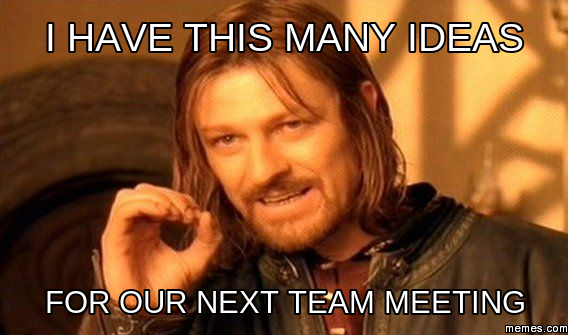Why You Need More Meetings with No Action Items

How often do you give others at work and home solutions to their problems without them having asked? It’s a common habit of founders. We’re in perpetual problem-solving mode. We have a massive bias to solve problems as fast as possible, and it’s tough to control.
My experience as CEO of a company doubling each year has proven to me that sometimes this bias is bad. As your company grows beyond the founding team, it gets harder to steer the team and implement changes. You learn that change management is a thing, and a bias for action can undermine frictionless change by alienating people who need time to adjust.
Today, I think it’s occasionally okay to talk and not act — or act but not as fast. Sometimes we need to have meetings without action items. Sometimes we just need to create space to speak without making decisions, and that is okay.
What I used to do: Expect immediate alignment
As a founder, you think about your company 24/7. When you share your ideas with others, you expect they’ll get them immediately. But it doesn’t work like that.
The best advice I got recently from one of our investors was: “Liran, by the time you share something, you have thought about it for days and had the time to process it. You can’t expect others to get there in five minutes.” That advice changed the way I operate.
In the past, I used to think about a problem, prepare a pre-read or presentation, call a meeting, and expect to have total buy-in, commitment, and a defined set of actions within 60 minutes. Sound familiar? If so, I can tell you that it doesn’t scale.
What I do differently today: Allow organic absorption
Today, I add a step for every change management initiative and decision for which I want buy-in and commitment: a meeting devoted to discussion and not problem-solving.
It looks like this:
- I set up a meeting to discuss my thoughts.
- I say at the start of the meeting that we’re not going to solve anything today.
- I share my thoughts and perspective, ask for initial feedback, and ask the team to think about it more over the next couple of days (I give people space).
- I schedule a follow-up meeting to only align on the problem before moving with any potential solution. Once the team agrees that we have the problem, the rest is easy.
- I work with the team to find potential solutions.
The results I have seen since adding this step have been amazing. The team is aligned and committed, and we generate better solutions. All I did was give them time and space to form their own opinion, rather than forcing mine upon them abruptly.
Talking itself can be a solution
I have also learned from the process that there is value in just talking about things without searching for solutions or defining action items. Sometimes just talking is the solution. Sometimes people just want to be heard and validated.
Making space for such conversation is critical. It’s hard for founders to accept, as we’re constantly in problem-solving mode. So consider it an investment of time. With better communication, you’ll have fewer problems that need solving in the first place.
So what are you going to do differently?
